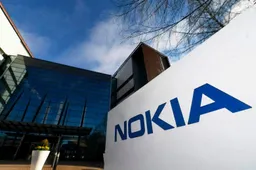Huawei Shipped More Than 200,000 5G Base Stations Worldwide
HuaweiTuesday, 03 September 2019 at 13:16

The 5th Huawei Asia-Pacific Innovation Day was held in Chengdu on September 3. It fully demonstrated innovative 5G services, including 5G VR, Panda, 5G Smart Bus, 5G UAV, 5G Rescue Vehicle, 5G Telemedicine and Education, etc. At this event held this morning, Xu Wenwei, director of Huawei and director of the Strategic Research Institute, issued a statement. According to it, Huawei has obtained more than 50 5G commercial contracts worldwide. Among them, 28 are from Europe, 11 are from the Middle East, 6 are from Asia-Pacific, 4 are from the Americas, and 1 is from Africa. At the same time, more than 200,000 5G base stations have been shipped. So nearly two-thirds of the 5G base stations are built by Huawei.
Also Read: Huawei Has 40 5G Contracts And Has Shipped Over 70,000 5g Base Stations
Xu Wenwei also said that with the arrival of 5G, the industry reached the limit of Shannon's law. Plus, Moore's Law has gradually reached its limit as well. Both theoretical limits and engineering limits need to break the bottleneck. Huawei must also move from innovation 1.0 to innovation 2.0. The most important of these is the university, and Huawei will fund university research.
Huawei’s rotating chairman Xu Zhijun said last month that Huawei has divided the 5G market into three categories: Gulf countries, South Korea, and China. In fact, these are large-scale construction markets. A few European countries have 100-200 base stations. The United States, Australia, and New Zealand also belong to this kind of market. Some countries have not yet built 4G, and 5G is still far from coming. He also said that according to the data at the end of 2018, China's global 4G base stations accounted for more than half of the world. And 5G base stations will account for more than half of the world as well. So the future development of 5G depends on China.

Popular News
Latest News
Loading



